The Best Ways to Mentally Stimulate Your Dog

Ever wondered if mental stimulation for dogs should be part of their daily routine? Without a doubt, yes! Being remarkably intelligent, dogs seek physical exercise and activities to engage their brains. If they can’t find any, they might resort to crafting their own entertainment – be it redecorating your sofa or taste-testing wires.
Let’s explore how to keep your dog mentally stimulated and the best ways to arrange engaging activities.
What Is Mental Stimulation for Dogs?
Mental stimulation is any activity that stimulates and exercises your dog’s mind. While being physically active helps your pooch grow muscles and become stronger, regular mental exercise is vital for building new neural connections in the brain and boosting brainpower.
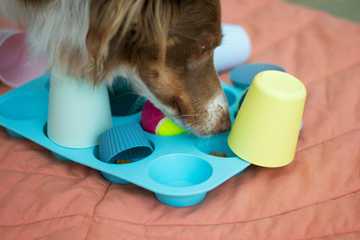
Cognitive functions in canines improve through tracking scents, learning new commands, solving puzzles, and other challenging activities. Regardless of the form, dog mental stimulation results in a tired but happy companion.
Why Is Mental Stimulation Important for Dogs?
The benefits of mental stimulation extend beyond preventing mischief. Ensuring your friend's mental well-being and a fulfilling life is crucial. That’s why responsible owners must pay extra attention to providing opportunities for daily cognitive exercise.
Benefits of mental stimulation for dogs include:
- Improved memory and concentration
- Enhanced overall well-being and mood
- Diminished stress and anxiety
- Reduced risk of cognitive decline due to aging
- Reduced hyperactivity
- A stronger bond between a pooch and their owner
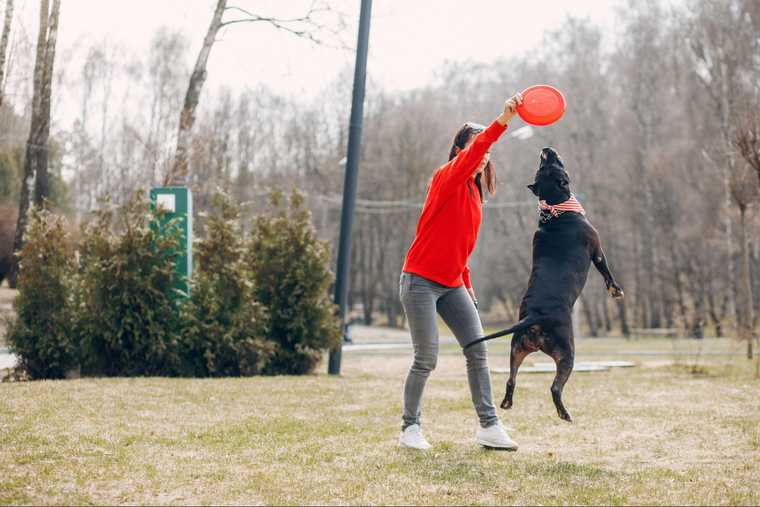
How to Provide Mental Stimulation for Dogs?
There are different ways of keeping your pet’s brain sharp, including interactive toys, brain games, canine sports, and other engaging activities. In this section, you’ll find a variety of suggestions and tips to keep your furry friend mentally engaged and happy. You can choose your favorite one, but don't forget to mix it up!
Remember that larger and more active breeds crave extra mental exercise compared to their petite counterparts. Typically, canines require 30-60 minutes of stimulating activities each day. Get ready to find out how to mentally stimulate your dog!
Interactive Toys
Interactive toys are fantastic for keeping your furry friend entertained while you're away. They can help prevent those pesky, destructive habits and keep problem behaviors at bay. These toys are a fun way to boost your dog's cognitive skills. Your pup will love the challenge! This type of activity is suitable for all dogs regardless of age, breed, or activity level.
Below, you’ll find some products that you can purchase for your dog:
1. A stuffed Kong
A stuffed Kong is a durable toy with yummy dog treats or peanut butter. Hide a treat, and it will make your pup enjoy trying to get the treats out, which keeps them busy and mentally engaged.

It's a fun and effective way to alleviate boredom, encourage problem-solving, and satisfy your dog's chewing instincts. Plus, it's great for calming anxious dogs and providing an outlet for excess energy.
2. Puzzle toys
Puzzle games are like fun toys that make your pooch think. You hide treats inside, and your dog has to figure out how to get them.

These games help dogs stay mentally sharp, avoid boredom, and playfully use up some energy. They're a simple and enjoyable tool to keep your dog happy and mentally active.
3. Slow feeders
Another great way to keep your pooch healthy and stimulate them mentally is with slow feeders. These special bowls contain textures and obstacles that prevent your pet from devouring the food.

Such patterns inside turn mealtime into a fun puzzle, promoting better digestion and making your dog think about how to get the food out of them.
Note that slow feeders are suitable for dogs who are still beginners in mental stimulation games, as they do not involve difficult tasks that require high cognitive skills.
Interactive Games for Dogs
Apart from interactive toys, there are plenty of ways to improve your relationship with your dog and give them a good portion of cognitive exercise. Mental stimulation games are one of them. The best thing about games is that you can genuinely have fun together. You can pick one below or even try them all!
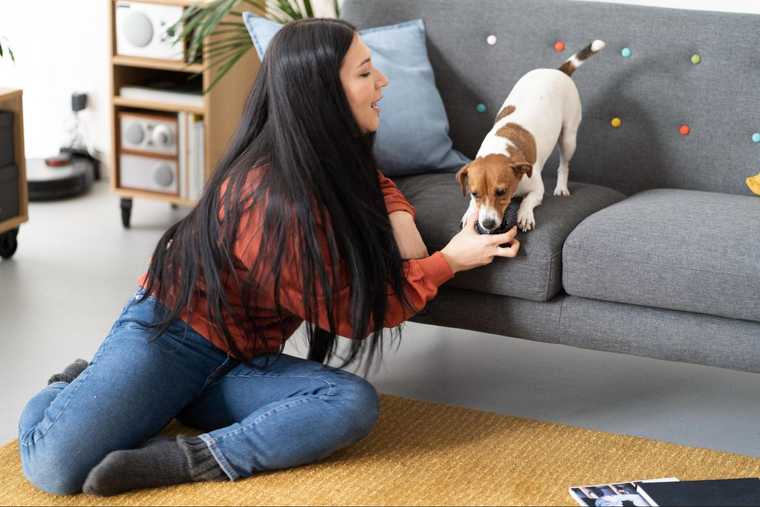
Pet owners have endless game options to choose from. You can start with interactive balls or tug toys to introduce your pooch to interactive play. Engaging in simple yet fun games of tug-of-war or fetch provides an excellent opportunity for your furry friend to focus and practice following your commands.
Playing games with a dog without using fancy equipment is also entirely possible. One of the simplest activities is hide-and-seek. You can hide a toy or a treat and encourage your companion to find it. It’s a great way to exercise a dog’s scavenging instincts.
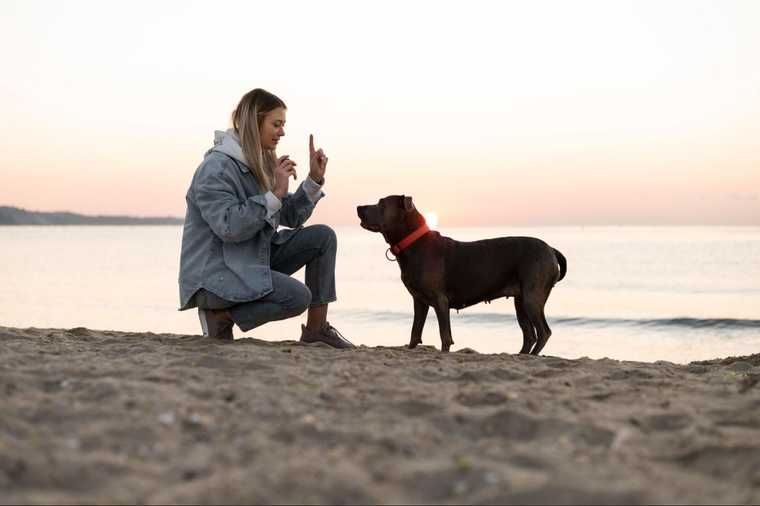
Mental Stimulation Rules
Apart from the fun, we shouldn’t forget that creating mental stimulation for your dog involves incorporating a few rules and guidelines to ensure a positive and enriching experience. Here are some mental stimulation rules for dogs:
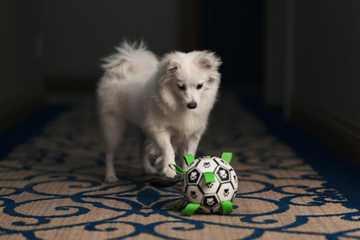
Safety First:
Ensure that any toys or activities provided are safe and free from potential hazards, such as small parts that could be swallowed.
Supervision is key
Always supervise your dog during mental stimulation activities to prevent accidents and address any issues promptly.
Start simple
Introduce stimulating games gradually to avoid frustration. Start with simple activities before progressing to more complex ones. This will allow your furry companion to build confidence and interest.

Keep it challenging
Based on your dog's progress, gradually increase the difficulty of the exercises you offer. A repetitive routine can lead to boredom, so make sure to provide a variety of challenges.
Use positive reinforcement
Use positive reinforcement, such as treats and praise, to reward your dog for engaging in mental stimulation activities. It strengthens the connection between the activity and positive experiences.
Adapt to your dog's age and health
Consider your pet's age, health, and physical condition when planning interactive games. Adjust mentally stimulating activities to accommodate any specific requirements.
Mix physical exercise with mental activities
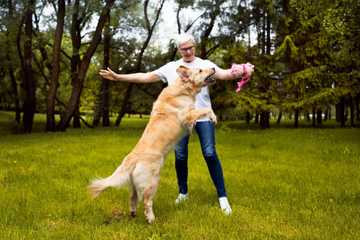
Physical and mental stimulation are a perfect combo to keep your pooch happy. Combine physical exercise with a cognitive work-out for a well-rounded experience. Activities like fetch, combined with obedience commands, provide both psychological and physical benefits.
Stick to a consistent routine
Establish a consistent routine to mentally stimulate and help your pooch anticipate and enjoy these activities. Regular engagement contributes to a happy canine.
Offer breed-specific activities
Recognize and incorporate activities that align with your dog's breed instincts. Herding breeds like Border Collies, Australian Shepherds, German Shepherds, etc., may enjoy activities that tap into their natural herding instincts.
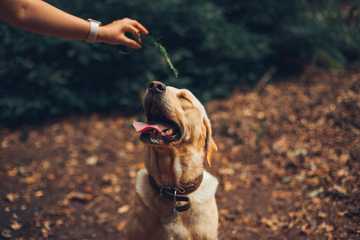
Monitor stress levels
Be attentive to your pet's stress levels during mental stimulation. If an activity seems overwhelming or causes anxiety, modify it or stop doing it.
Offer various games
Provide a variety of mental stimulation activities to keep your dog mentally engaged. Puzzle toys, scent games, and obedience training all contribute to a well-rounded mental workout.
Wrap Up
Mental stimulation is vital for ensuring the mental well-being of your furry companion. You can choose from an endless array of activities. Dive into the joy of experimenting with games and interactive toys, or consider a trip to an agility sports school with your dog. Ensure you prioritize your dog's enjoyment, breed needs, and safety, ensuring a delightful time together!

Passionate team dedicated to help pet owners raise safe and obedient dogs, fostering meaningful connections with their furry companions.

Certified dog trainer, exclusive positive reinforcement methods & tackling aggression problems.
